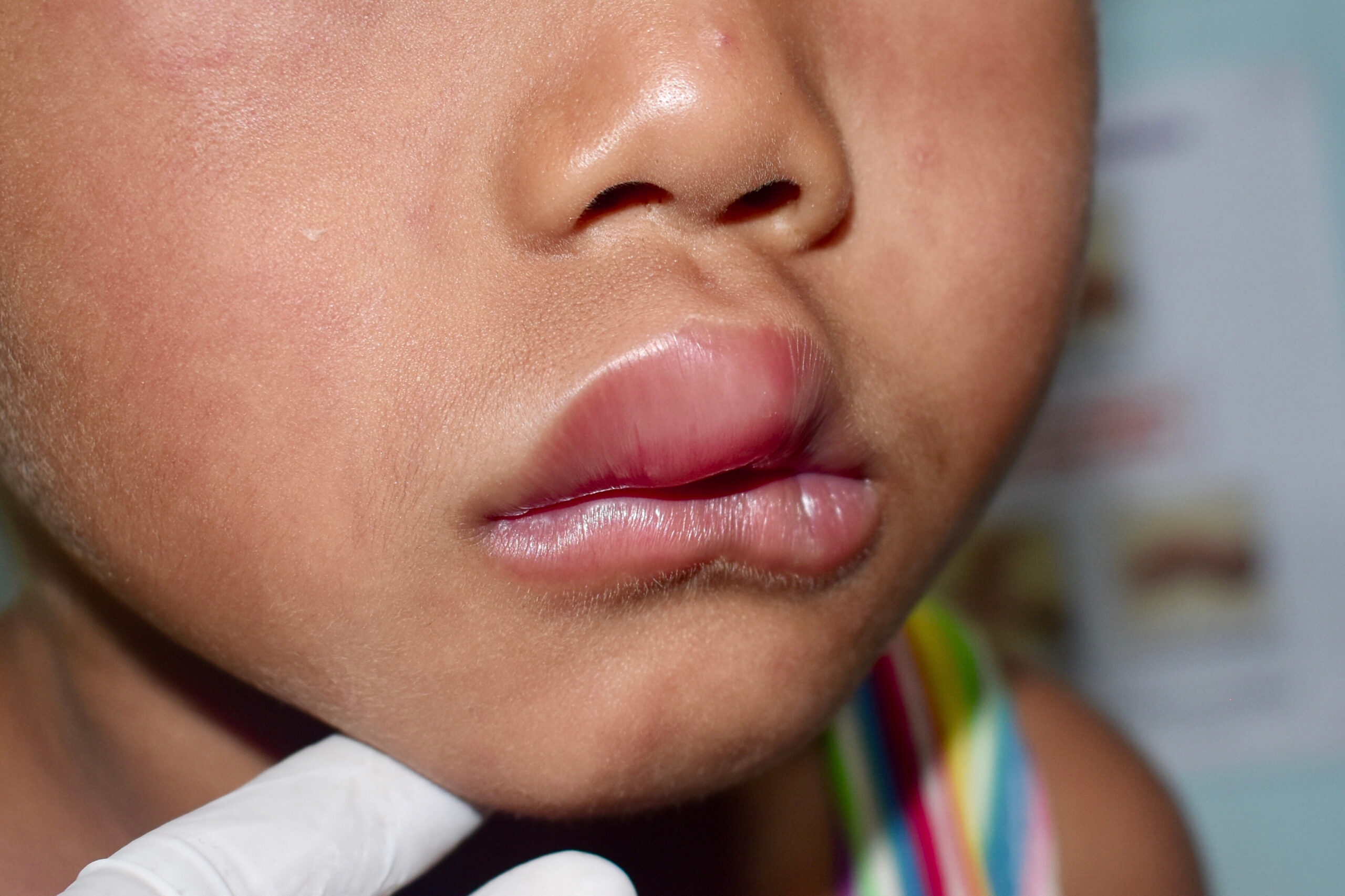Allergic Reactions
Definition
Anaphylaxis is a potentially fatal allergic reaction that needs immediate medical attention. The goal for treating anaphylactic shock is prompt recognition and treatment with epinephrine to prevent the rapid progression of this disease to respiratory or cardiovascular complications, including shock.

Anaphylaxis Signs and Symptoms
Signs and Symptoms of Anaphylaxis
Individuals having an anaphylactic reaction will show signs and symptoms such as:
- Facial swelling
- Shortness of breath
- Dizziness
- Fainting
- Wheezing
- Tachycardia
- Hives and rashes
- Flushed or pale skin
- Changes or loss of consciousness

Swollen Lips (Angioedema) Following Allergic Reaction
First Aid Intervention for Anaphylaxis
Once it is determined that the individual is having an anaphylactic reaction, the first responder performs the following:
- Calls 9-1-1.
- Determines if the patient has an EpiPen. Patients known to have a history of anaphylaxis may have been prescribed an epinephrine delivery device such as an EpiPen autoinjector.
- Utilizes the EpiPen of the patient, if it is available, by injecting it intramuscularly.
- Notes the time of injection.
- Lays the patient down, elevating their feet and legs to improve perfusion in the case of anaphylactic shock.
- Stays with the patient until EMS arrives.
If the patient develops respiratory distress or failure, rescuers give assisted ventilations. If the patient deteriorates further into cardiac arrest, they initiate and perform high-quality CPR.

Epinephrine Autoinjectors (EpiPen)